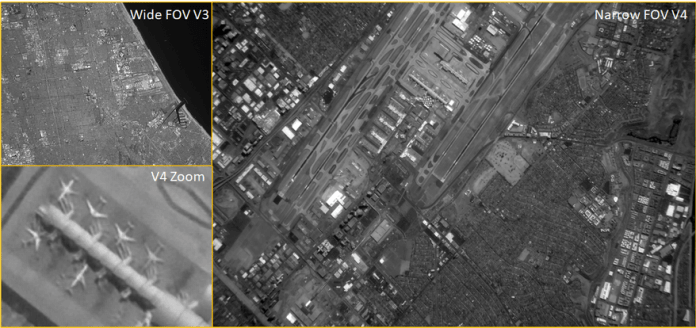
SAN FRANCISCO – Tyvak released the first images of objects in orbit and on the ground captured by telescopes the satellite manufacturer developed with the Lawrence Livermore National Laboratory (LLNL).
The technology demonstration satellite, Tyvak-0130, launched May 15 on a SpaceX Falcon 9 rideshare flight. The two telescopes that make up Tyvak-0130’s GeoStare2 payload “are producing super high-resolution images in a small form factor at a low cost,” Marc Bell, CEO of Terran Orbital, Tyvak’s parent company, told SpaceNews.
Tyvak announced that it completed in-orbit checkout and commissioning of the shoebox-size satellite, which has transmitted more than 4,500 images.
“Our payload is operating very well; we’re ahead of schedule on the checkout,” Wim de Vries, astrophysicist and associate program leader for LLNL’s Space Science and Security Program, said in a statement. “The satellite is functioning extremely well.”
While many small satellites are observing objects on the ground, few have focused on gathering data on objects in orbit. Space Domain Awareness, previously called Space Situational Awareness, is a growing concern for satellite operators as spacecraft launches accelerate and space debris concerns mount.
A composite false-color image of the Andromeda galaxy was created by stacking five wide-field-of-view channel images captured by a GeoStare2 telescope for an exposure of eight seconds. During this series of exposures, two satellites moved through the field of view. Credit: Lawrence Livermore National Laboratory
“It’s much easier to conduct space domain awareness from space because you don’t have to look through clouds and you don’t have to wait for darkness,” de Vries said in a statement.
With satellite commissioning activities completed, Tyvak and LLNL plan to focus on conducting experiments to demonstrate capabilities including “responsive and on-demand terrestrial imaging with minimal delay” and space science, according to Tyvak’s June 17 news release.
Tyvak and LLNL are working together under a four-year, $6 million cooperative research and development agreement focused on mounting LLNL’s Monolithic Telescope (MonoTele) technology on small satellites. MonoTele is a space telescope fabricated from a single, monolithic fused silica slab, which offers benefits in terms of spacecraft size, weight and power.
Tyvak-0130 hosts one telescope with a narrow field of view to provide high resolution imagery and another with a wide field of view.
– Advertisement –